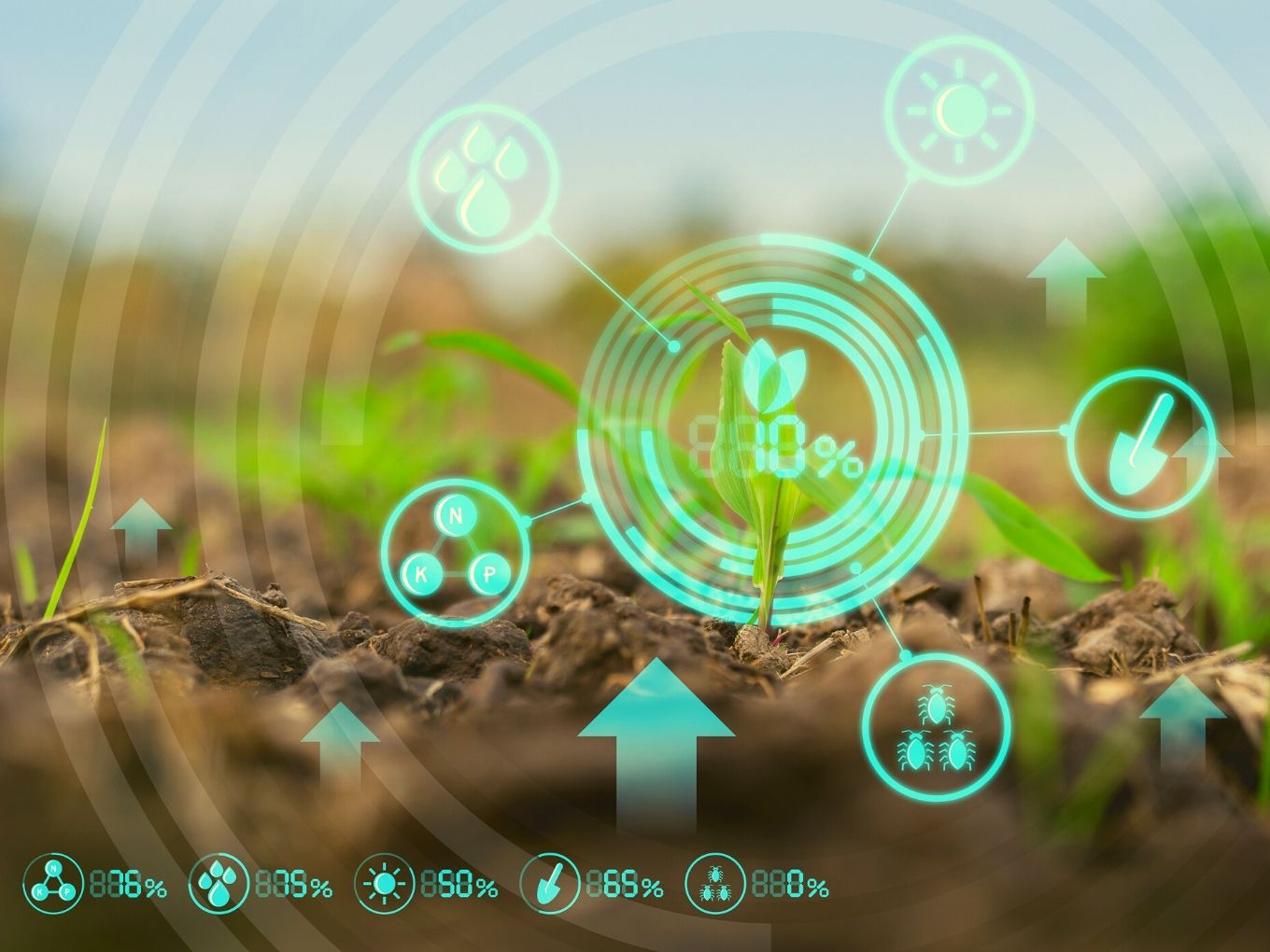
SUMMARY
In spite of the sector’s importance in India’s economy, farmers still face significant challenges
Technology can play a huge role in a few key areas of agri inputs
The new-age farmer is far more tech-savvy and is open to exploring use of technology
In India, Agriculture occupies more than 50% of the workforce and contributes to ~17 % of the GDP. The sector’s importance in India’s economic and social fabric goes well beyond these indicators as the majority of India’s poor live in rural areas where the primary source of livelihood is agriculture. Millions of people across the country depend on agriculture for their livelihoods.
In spite of the sector’s importance in India’s economy, farmers still face significant challenges, most of which have not been addressed or solved over the past century. From government apathy and uneven climate conditions to exploitative market practices, the challenges are many. With a growing population and rising incomes in the cities, there is more and more burden to produce more and better, in terms of quantity and quality.
However, agri stakeholders continue to face several challenges, most that have been around for decades and some that are a result of today’s changing times. Over the last decade, several startups and a handful of established companies are trying to address these challenges to improve the livelihoods of farmers. Piggybacking on India’s data penetration, these companies are using smartphones and the internet to help farmers grow, harvest and sell their crops more efficiently.
How Tech Can Help?
Over the last two decades, technology has been a very strong enabler across different sectors. From Telecom to travel, healthcare to shopping, the way we commute, the way we shop, the way we do our bank transactions and many other tasks have changed enormously. Similarly, in agriculture, the impact of tech will be equally significant. The convergence of mobile networks, broadband internet, cloud platforms, IoT, AI and open data has started the transformation in the Agri sector and all signs indicate a higher impact in the near future.
Using technology in agriculture can help farmers and other agri stakeholders alleviate a lot of the above-mentioned challenges. Being a more traditional space, with a higher concentration in rural areas, the use and adoption of tech in the agri space have been far behind the curve as compared to other sectors.
However, the recent explosion in usage of smartphones in rural areas and the affordable internet has helped farmers to take their first steps towards adopting technology in areas like supply chain management, soil testing, financing and other necessary infrastructure.
Another important factor that has facilitated technology penetration in agriculture is the growing number of agriculture startups in India. A report released by NASSCOM in August 2019 indicates that India has more than 450 agritech startups in India. Several startups have come up with innovative business models both on the input side (pre-harvest) and post-harvest side to solve some of the key issues plaguing the sector and modernize India’s agriculture practices and processes.
This is both fuelled by the Government focus, subsidies and incentives, and at the same time just the sheer number of opportunities available in the underserved agri sector today.
Agri is a vast space though and while there are several areas where the new-age technologies can help, at this point in the current Agri scenario across India, following are the key areas of high impact across pre and post-harvest:
Ease of Access To Agricultural Inputs
There is a huge scale in the Agri inputs area – it is of significant importance to all farmers irrespective of land holding, farm size, region and as such tech has tremendous potential here. Technology can play a huge role in a few key areas of agri inputs – namely, everyday agri inputs like seeds and fertilizers, irrigation technologies, capital type inputs and farm equipment like tractors that are often a larger investment.
As a starting point from a tech perspective, ecommerce and mobile solutions with their reach and distribution can play an important role; there are many start-ups working towards making this a feasible model; a model that works equally well with the current on the on-ground setup that regional Agri conglomerates in India have. With the improvement in farmer incomes and easier credit access, this model could be the way forward with access to Agri inputs.
As this area matures, with the advent and spread of IoT / sensors, cloud-based solutions, Agri inputs’ needs identification to order to fulfilment process could be fully automated using Artificial Intelligence (AI) type of solutions in the background, a concept fast picking up pace in developed Agri economies.
Timely Inputs And Advisory
It’s a no brainer that higher yield and farm productivity is essential – both to help increase farmer income as well as to meet the ever-rising demand for produce, given current population growth. Farmers, especially from more rural and interior areas, don’t always have enough knowledge about various resources available related to farming and the right advice on the way to use them. Today, imagery technology is available to help with assessing and displaying soil quality levels.
This technology helps evaluate nutrient levels in the soil and determine how fertile the soil is. Once this data is available, it is easy to identify what nutrients (fertilizers) are needed to replenish the soil and bigger picture, it helps dictate both the type of crops and overall yield. This becomes all the more important due to changing patterns of soil fertility due to crop cultivation over time.
Technology that makes soil testing on-site, faster, easier and provides accurate analysis that can be easily disseminated to the farmers would go a long way in helping farmers increase yield by making informed decisions in the choice of crop patterns, crop diversification and inputs such as seeds and fertilizers.
Similarly, companies today are also leveraging technology to make available information and advisory services that cover infestation prediction, weather forecasts, water availability etc. – all of which help the farmers make better choices and increase incomes.
Farm Linkage And Market Access
On the post-harvest side, there are various technologies that can provide tremendous benefit to farmers and agriculture in general via farm linkage and market access to farmers. This process has already started and while it is yet to reach the more interior parts of India, it is definitely on the right track. There are a number of companies and startups that are working towards this.
Inputs advisory, micro-financing companies and most widely by supply chain companies are buying directly from farmers and sell produce in the cities, giving farmers a better price at their doorstep. In addition to this, companies are utilizing tech to onboard farmers, profile them and help provide them with a demand forecast that enables farmers to be sure of a market, as well as move towards crop diversification and higher-income produce. To summarize, tech can help eliminate middlemen, optimize transport, better match demand and supply and help minimize distribution losses thereby improving farmer incomes.
Micro Financing
A large share of farmers in India, as much as about 80%, own small lands and use traditional methods of agriculture. Due to the limited cash at hand, these farmers are often unable to afford various means of improving their production such as fertilizers, insecticides, high yielding seeds or irrigated-based techniques of production. These farmers lack the economies of scale due to small scale production which results in higher per capita cost and lower production levels. This creates a vicious cycle from which farmers wouldn’t be able to escape unless they have access to credit/capital.
The traditional means of financing are often inaccessible or provide inadequate capital for farmers. For instance, conventional loans from banks take almost 3 to 12 months, involve cumbersome paperwork and have additional fees/charges. This is where microfinancing has a critical role to play – it helps poor farmer households meet their basic needs, protects them against risks and more importantly enables improvement in their income.
Microfinancing has seen a lot of good activity in the recent past from both startups and established companies. These companies are leveraging tech to reimagine the entire micro-lending ecosystem. Through market linkages and Government-backed crops, they are ensuring that there is a market which is ready for the sale of produce – a timely availability of market ensures farmers have the means for timely repayment of loans and thus minimizes NPAs.
Overall, there is a tremendous potential in this space and the companies are increasing the reach and scale by building inclusive tech solutions that are bringing farmers and other stakeholders in the ecosystem under a single platform.
While some challenges do remain in terms of last-mile technology adoption, overall, there is enough impetus both from the private sector and the Government now, that we should finally see some transformational impact in Agri that technology has brought about in other sectors in the past couple of decades.
What also helps is that the new age farmer is far more tech-savvy and is open to exploring the use of technology to better their own livelihoods and those around them. Active use of social media is already helping farmers share information to help each other and enabling companies to connect with farmers and facilitate or provide services above that could give Indian Agriculture a long-overdue facelift.


























